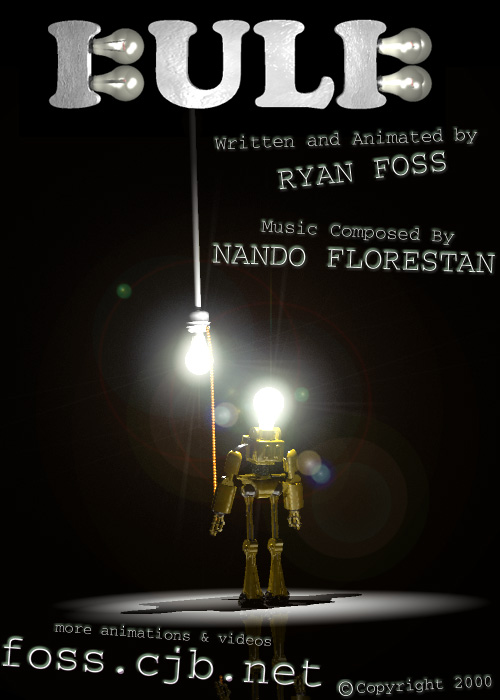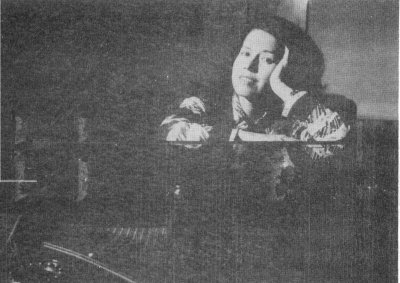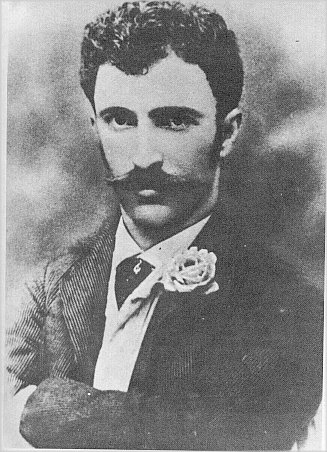

Grip is a great CD ripper/encoder for GNU/Linux. If you have never tried it, give it a go. It rips to wave using cdparanoia or others. It can simultaneously encode the ripped tracks to the format of your choice. Supports cddb too. Easy to use.
I usually encode to the ogg vorbis format (...)
Ogg Vorbis is much better than MP3 (roughly the same audio quality for half the file size) and is free of patents.
On Windows, Winamp has always been able to play ogg files. If you don’t like Winamp there is plenty of other options too – ogg vorbis really is the successor to MP3.
Zero Install looks very useful for free software developers.
Listaller is another perspective.
If you ever need to change your Passport / MSN password, you might lose half an hour searching for this function. It is buried here.
David Sklar wants to receive marketing, billing, and other corporate communications via RSS instead of e-mail. Me too. http://www.oreillynet.com/pub/wlg/5680
By the way, the new version of Mozilla Thunderbird (the great free e-mail client) is also a feed reader.
Um professor meu gostava de dizer que “vírgula não é orégano”. E às vezes umas poucas vírgulas podem assumir importância insuspeita. Eis um exemplo:
Um homem rico estava à beira da morte. Pediu papel e pena e escreveu assim:
Deixo meus bens à minha irmã não a meu sobrinho jamais será paga a conta do alfaiate nada aos pobres.
Morreu antes de fazer a pontuação. A quem deixava ele a fortuna? Eram quatro concorrentes.
O sobrinho fez a seguinte pontuação:
Deixo meus bens à minha irmã? Não! A meu sobrinho. Jamais será paga a conta do alfaiate. Nada aos pobres.
A irmã chegou em seguida. Pontuou assim o escrito:
Deixo meus bens à minha irmã. Não a meu sobrinho. Jamais será paga a conta do alfaiate. Nada aos pobres.
O alfaiate pediu cópia do original. Puxou a brasa pra sardinha dele:
Deixo meus bens à minha irmã? Não! A meu sobrinho? Jamais! Será paga a conta do alfaiate. Nada aos pobres.
Aí, chegaram os descamisados da cidade. Um deles, sabido, fez esta interpretação:
Deixo meus bens à minha irmã? Não! A meu sobrinho? Jamais! Será paga a conta do alfaiate? Nada! Aos pobres.
Assim é a vida. Nós é que colocamos os pontos. E isso faz a diferença.
Blade Runner, the cult movie, faced many problems in post-production. People wouldn’t get it, including, it appears, some of its producers. I have recently watched the director’s cut for the tenth time and it is still growing on me. It certainly is one of the more perfect movies I have ever seen.
A very interesting read is the Blade Runner FAQ. It reveals things that certainly didn’t occur to you as you watched, but will intrigue you now...
Spoiler warning: Do not read the Blade Runner FAQ if you haven’t seen the movie yet!
Back in the year 2000, as a young music composer wannabe, who even had some music published at the mp3.com phenomenal website, I was looking up the internet for some opportunity to create music for animations and I came across the young filmmaker Ryan Foss. He had just posted a very short scene of a work-in-progress of his, featuring a bulb-headed robot in dark surroundings. I watched the few seconds of silent video and felt an atmosphere... eerie... almost religious... but heavy.
I didn’t talk to Ryan. I proceeded to compose some music on my computer, using the sounds of a church organ, a cello and a fake choir. Then I sent the music to him while also introducing myself.
I remember he said he didn’t immediately like the music, but as soon as he heard it with the video, he found they matched. A partnership was born – he did need music – and the result, a very short 3d animation, can be seen at:
http://www.pocketmovies.net/download/bulb
If you are seeing this much later, bear in mind this was the year 2000 and the whole thing was done in our personal computers...

Now we have completed the animation Bulb II, which shows that we both made a lot of progress in one year.
http://www.pocketmovies.net/download/bulb-ii
This time, there was much more work to do, so in addition to the music, I am responsible for part of the story and part of the sound effects.
2A in the first short meant 2 amperes. But now we think of it as a serial number. Thus, 2B. But the real mysteries in the story are to remain unanswered.
Here is something nobody has ever noticed: Near the end of the music, I quote Schumann’s Warum? (“Why?”, third piece from the Fantasiestücke op.12). That is such a beautiful piece of counterpoint!
For the sequel I have been able to use better sounds and equipment. I feel the lack of words makes the music entirely responsible for setting the mood and explaining the feelings. I like that responsibility. Reminds me of old silent film, such as Metropolis. There now exist countless soundtracks to this classic movie, written by different composers. Not many are good, but at least one is: Descent, written by the Australian composer Carl Vine.
I don’t think the 2 videos can change people’s lives, but they were great as creative exercises and they actually got included in 2002 in Volume One of North America’s Best Independent Animated Shorts.
Hell, my name even got into IMDb, the largest website about cinema.
I have never met Ryan in person. Isn’t it amazing what we can do over the internet these days?
Now if you are tired of the heavy atmosphere of these 2 shorts, I have the perfect antidote for you. Another australian artist, Dave Jones, makes wonderful, funny Flash animations. Browse his Transience website, click Animations, then watch The Heist. (No, I didn’t work with him, I just love The Heist.)
I enjoy composing serious music for film and I would like to do it again...
I want you to meet romantic Brazilian composer Alexandre Levy, who lived only 27 years but left important works of very good taste.
While you read about this fantastic musician, listen to the Tango Brasileiro, his most famous work, recovered from an old vynil, as played by the wonderful pianist Eudóxia de Barros:

Thanks to pianist Eudóxia de Barros for allowing me to publish here her recordings of compositions by Alexandre Levy!
Interest in this great composer is justified mainly by the high quality of his output, all in the romantic tradition.
Further, Levy was a pioneer of Brazilian musical nationalism, as shown in the Tango Brasileiro, for piano, and the Suite bresilienne. In spite of the title in French, the fourth part of the suite is a Samba.
He is considered one of the best Brazilian composers of the romantic period. One wonders what could have happened if only he hadn’t died so early and had had the chance to write more music...
Tango Brasileiro was published in 1890 in the newspaper O Diario Popular, “as a gift to our graceful readers”. What does this mean?
In those times – well before women’s suffrage –, all the well-born ladies had a piano at home and were taught to play it. But well beyond these youngens’ delight, the piece is now part of the standard Brazilian repertoire of piano music. Guiomar Novaes, Antonieta Rudge and Eudóxia de Barros are some of the pianists that have recorded it.
(The tango brasileiro as a genre is a Brazilian ballroom dance that was in vogue in Rio de Janeiro in the last decades of the XIX century. It is very different from the tango argentino. Another pianist from those times, Ernesto Nazareth, wrote many famous Brazilian Tangos. Finally, the chorinho genre took over both Nazareth’s music and the tango brasileiro, as if both had always been choro.)
Here is the first page of the score of the Tango Brasileiro.
Levy’s piece is built on the contrast between two themes, the first in A Major, the second in A Minor (0:14-1:19). The last section is in A Major, but the final chord is, surprisingly, of A Minor. This is the opposite of the Picardy third, which Walter Piston explains in his Harmony:
“In the eighteenth century it was almost a mannerism to end on a major tonic triad even though the movement had been unmistakably in minor throughout. This major third was called the tierce de Picardie or Picardy third.”
Can I, then, call Levy’s procedure an anti-Picardy third?
The function of this final surprise is to wrap or synthesize, in a single chord, the entire tension of the piece, as in the most daring romantic fragments.
This elegant and good-humoured piece for piano, opus 1 by Alexandre Levy, was composed between 1881 and 1882. The interpretation is by Eudóxia de Barros.

Alexandre Levy was born in November 10th, 1864. He grew up in a very musical environment. His father, Henrique Luis Levy, owned the Casa Levy, a music store that was very important in the cultural life of the city of São Paulo, Brazil’s largest metropolis. The Casa Levy survives today as a piano store.
Alexandre Levy’s first music teacher was his brother Luis Levy, an excellent pianist and a good composer as well. Later Alexandre studied with Gabriel Giraudon, a French teacher who lived in São Paulo.
French culture must have influenced Alexandre Levy. The family probably used to speak French at home: his father was born French and his mother was from the French part of Switzerland. The composer used to name his works in French.
In 1887 Alexandre went to Europe in order to complete his education. In Paris he studied harmony and counterpoint with Emile Durand, who would also teach Claude Debussy.
Back to São Paulo, Levy composed some masterpieces until his mysterious premature death on January 17th, 1892. He did not suffer from any illness that we know of, but suddenly passed away, leaving an amazing production for a 27 year-old. “An announcement of a genius”, said Mario de Andrade.
An interesting romantic miniature, very quiet, in the tradition of Felix Mendelssohn’s songs without words. Played by Eudóxia de Barros.
Levy’s music took a strong influence from Schumann. But his works are highly original and sometimes built on Brazilian popular forms (the case of the Tango Brasileiro) or use Brazilian folk themes as raw material, which makes him a pioneer of Brazilian musical nationalism.
In fact, even if his art is fundamentally European, Alexandre Levy was classified by Mario de Andrade (perhaps irresponsibly) as a more characteristically Brazilian composer, along with Antonio Carlos Gomes (1836-1896) and Alberto Nepomuceno (1864-1920), than others whose attempts at creating Brazilian music seem more a concession to the exotic, since they couldn’t free themselves enough from European lessons (Leopoldo Miguez (1850-1902), Henrique Oswald (1852-1923), Francisco Braga (1868-1945), João Gomes de Araújo, Barroso Neto (1881-1941) and Glauco Velásquez (1884-1914)).
It cannot be said that Alexandre Levy was the very first composer to use Brazilian popular elements as a thematic basis because in 1857 Antônio Carlos Gomes wrote Cayumba, a negro dance, inspired in folk sources. Another important work which preceded Levy’s was the piano rhapsody A Sertaneja, written in 1869 by diplomat and composer Brasílio Itiberê da Cunha (1848-1913). The song he used was Balaio, from the south of Brazil.
This however does not diminish Alexandre Levy’s historical importance, which is also due to the quality of his compositions.

This important and difficult piano piece, from 1887, reveals how much Levy admired Robert Schumann. The appassionato (passionate) isn’t in the title gratuitously; this is one of Levy’s most romantic pieces.
This haunting performance is by sensational pianist Belkiss Carneiro de Mendonça, who lived in Goiás and passed away in 2005.
Nowadays the Brazilian folk song “Vem cá, Bitu” is better known by its alternative lyrics “Cai, cai, balão”. The first theme with variations ever written on a Brazilian folk song is this interesting piece by Alexandre Levy, with 16 variations.
I intend to write a post about these variations, using Eudóxia de Barros’ recording. Are you interested?
Faço questão que você conheça o compositor romântico paulistano Alexandre Levy, que viveu apenas 27 anos mas deixou uma obra importante e de muito bom gosto.
Enquanto você lê sobre este fantástico músico, ouça o Tango Brasileiro, sua obra mais famosa, na interpretação da maravilhosa pianista Eudóxia de Barros, recuperada de um velho vinil:

Agradeço à pianista Eudóxia de Barros pela permissão para publicar aqui as suas gravações das músicas de Alexandre Levy!
O interesse no grande compositor justifica-se principalmente pela alta qualidade de suas obras, inseridas na tradição romântica.
Além disso, Levy foi um pioneiro do nacionalismo musical no Brasil, com obras como o Tango Brasileiro para piano e a Suite bresilienne. Apesar do título em francês, a quarta parte da suíte é um Samba.
É considerado um dos melhor compositores brasileiros do período romântico. Imagine se não tivesse morrido tão cedo e tivesse produzido mais...
O Tango Brasileiro foi publicado em 1890 no jornal O Diario Popular, “como um presente às suas graciosas leitoras”. O que significa isto?
Naquela época – bem antes do sufrágio feminino –, as moças bem-nascidas tinham um piano em casa e eram ensinadas a tocá-lo. Mas muito além do deleite dessas jovens, o Tango entrou para o repertório brasileiro de música para piano. Guiomar Novaes, Antonieta Rudge e Eudóxia de Barros são só algumas das pianistas que o gravaram.
(O tango brasileiro é uma dança de salão brasileira que esteve na moda no Rio de Janeiro nas últimas décadas do séc. XIX. É bastante diferente do tango argentino. Outro pianista da época, Ernesto Nazareth, escreveu muitos tangos brasileiros famosos. Finalmente, o chorinho apropriou-se tanto de Nazareth como do tango brasileiro, como se ambos sempre tivessem sido choro.)
Veja a primeira página da partitura do Tango Brasileiro.
A peça de Levy é construída sobre o contraste entre dois temas, o primeiro em lá maior, o segundo em lá menor (0:14-1:19). A última seção é em lá maior, mas o acorde final é – surpresa sonora! – de lá menor. Isto é o oposto da terça picarda, explicada por Walter Piston em seu livro Harmonia da seguinte forma:
“No século 18 era quase um maneirismo terminar numa tríade de tônica maior embora o movimento tivesse certamente sido todo em modo menor. Esta terça maior era chamada tierce de Picardie ou terça de Picardia.”
Posso então chamar o procedimento de Levy de terça anti-picarda?
A função desta surpresa final é resumir num único acorde toda a tensão da peça, como nos mais geniais fragmentos românticos.
Esta elegante e bem-humorada peça para piano, opus 1 de Alexandre Levy, foi composta entre 1881 e 1882. A interpretação é de Eudóxia de Barros.

Alexandre Levy nasceu em 10 de novembro de 1864. Cresceu num ambiente muito musical. Seu pai, Henrique Luis Levy, foi o fundador da Casa Levy, uma loja de música muito importante na vida cultural da cidade de São Paulo. Existe ainda hoje como comércio de pianos.
O primeiro professor de música do menino foi seu irmão Luis Levy, excelente pianista e também compositor. Mais tarde, Alexandre estudou com Gabriel Giraudon, professor francês que vivia em São Paulo.
A cultura francesa certamente influenciou Alexandre Levy. A família provavelmente falava francês em casa: seu pai era francês de nascimento e sua mãe vinha da parte francesa da Suíça. O compositor costumava dar títulos em francês às suas obras.
Em 1887 Alexandre foi para a Europa para completar sua educação. Em Paris ele estudou harmonia e contraponto com Emile Durand, que haveria de ser também professor de Claude Debussy.
De volta a São Paulo, Levy compôs algumas obras-primas até sua misteriosa morte prematura, no dia 17 de janeiro de 1892. Ao que se saiba não sofria de nenhum mal, mas subitamente faleceu, deixando já uma produção espantosa para quem teve apenas 27 anos de vida. “Um anúncio de gênio”, disse Mario de Andrade.
Uma interessante miniatura romântica, quietinha, na tradição das Canções sem palavras de Felix Mendelssohn. Tocada aqui por Eudóxia de Barros.
A música de Levy mostra forte influência de Schumann. Mas suas obras são altamente originais e às vezes construídas em formas populares brasileiras (o caso do Tango Brasileiro) ou usam temas folclóricos brasileiros como matéria prima, o que o torna um precursor do nacionalismo musical brasileiro.
De fato, mesmo se sua arte é fundamentalmente europeia, Alexandre Levy foi classificado por Mario de Andrade (talvez irresponsavelmente) como um compositor mais caracteristicamente brasileiro, juntamente com Antonio Carlos Gomes (1836-1896) e Alberto Nepomuceno (1864-1920), do que outros cujas tentativas de fazer música brasileira parecem mais uma concessão ao exótico, pois não conseguiam se libertar o suficiente das lições europeias (Leopoldo Miguez (1850-1902), Henrique Oswald (1852-1923), Francisco Braga (1868-1945), João Gomes de Araújo, Barroso Neto (1881-1941) e Glauco Velásquez (1884-1914)).
Alexandre Levy não foi o primeiríssimo compositor a usar elementos populares brasileiros como base temática porque já em 1857 Antônio Carlos Gomes escrevia Cayumba, uma dança de negros, inspirada em fontes populares. Outra obra importante que precedeu às de Levy foi a rapsódia para piano A Sertaneja, do diplomata e compositor Brasílio Itiberê da Cunha (1848-1913), composta em 1869. A canção usada foi Balaio, do sul do Brasil.
Mas isto não diminui a importância histórica de Alexandre Levy, que também se deve à qualidade de suas composições.

Esta importante e difícil peça para piano, de 1887, revela o quanto Levy admirava Robert Schumann. O appassionato (apaixonado) não está no título por acaso; é uma das peças mais românticas de Levy.
Esta arrebatadora performance é da sensacional pianista goiana Belkiss Carneiro de Mendonça, falecida em 2005.
Hoje em dia a canção folclórica brasileira “Vem cá, Bitu” é mais conhecida pela letra alternativa “Cai, cai, balão”. O primeiro tema com variações jamais escrito sobre uma canção folclórica brasileira é esta interessante obra de Alexandre Levy, com 16 variações.
Pretendo escrever um post somente sobre essas variações, usando a gravação de Eudóxia de Barros. Você se interessaria?